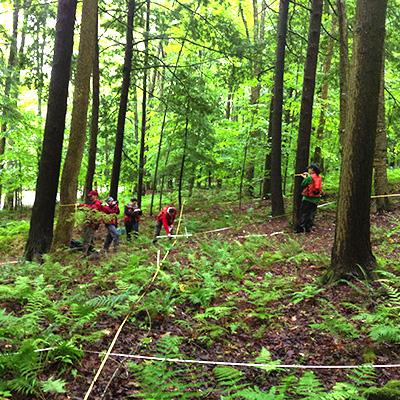Effects of Long-Term Forest Recovery Pathways and Management History on Carbon Sequestration and Co-Varying Ecosystem Services

Following widespread forest clearing and subsequent agricultural abandonment in the 1800s, the northeastern U.S. reverted to predominantly forest cover, though it is again declining in all six New England states. With increasing interest in managing forests for carbon storage and other benefits (i.e., watershed protection, biodiversity), we must understand varied trajectories of long-term biomass accumulation in secondary forests resulting from land-use history. At Marsh-Billings-Rockefeller National Historical Park in Vermont, NSRC researchers found recovering secondary forests can play a vital role in carbon sequestration and help dampen the future intensity of climate change.
Researchers re-measured 60 plots, established in 2001, at the Park and used 150 years of documentary data from park records. As the first parcel of land to be actively reforested in the eastern U.S., the Park’s diverse forest mosaic reflects a history of alternate reforestation approaches. Researchers investigated the influence of these reforestation approaches (plantation vs. natural recolonization and regeneration) and management history (long-term low intensity harvests at varying frequencies) on aboveground carbon storage and forest structural development.
High carbon storage observed in the Park’s mature, planted, and naturally regenerated forests supports previous reports that aboveground biomass can accumulate late into stand development in secondary forests. Forest recovery to 2003 reveals high potential for carbon accumulation on sustainably managed landscapes, particularly where high stocking is maintained. New England’s secondary forests have potential to re-achieve high levels of carbon storage reported previously in primary forests. However, some management approaches can redirect pathways of biomass accumulation and must be considered carefully when carbon market protocols call for high carbon stocking.
